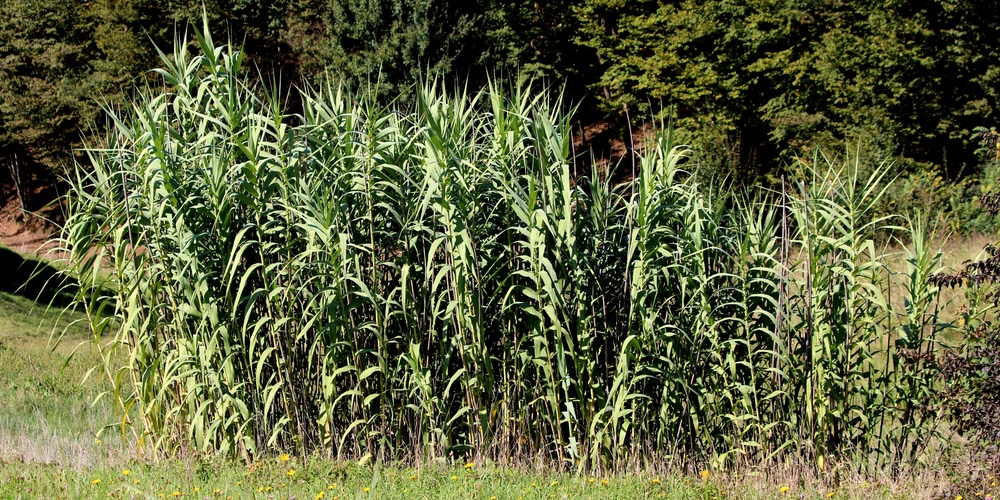Imagine walking through your yard and noticing that you have small plants that appear to be corn sprouting up in areas where there is no corn planted. Or maybe you did not even plant corn in your garden, but you still have corn-like stalks shooting up in seemingly random places. While this might seem strange, many different plants look like corn!
Corn is one of the most widely grown crops in the world. Its tall stature and yellow kernels make it easily recognizable. However, there are several other plants that resemble corn but are not actually corn. Learning to identify the differences can help prevent confusing these imposters for real corn.
Sorghum
Sorghum, sometimes called milo, looks very similar to corn It grows in that classic tall, upright fashion with leaves coming off the sides of the stalks The heads that contain the seeds also look like miniature corn cobs with small, round grains instead of kernels.
While sorghum can be used as livestock feed, its grains are edible for humans as well. They have an earthy, sweet flavor and chewy texture. Sorghum is naturally gluten-free so it’s useful for people with celiac disease or gluten intolerance.
Teosinte
Teosinte is a wild grass that is actually a ancestor of modern corn. It originated in Mexico and Central America. While the plants look like scraggly corn stalks, the “ears” of teosinte only contain 6-12 kernels. These kernels are also surrounded by a tough outer casing, unlike the exposed corn kernels we’re used to seeing.
Despite its unimpressive appearance, teosinte is valuable from a genetic standpoint. Modern corn emerged after generations of teosinte was selectively bred by ancient Mesoamericans.
Quinoa
Quinoa originates from the Andes Mountains in South America. While technically a pseudo-cereal, quinoa plants produce clustered seed heads that could be mistaken for corn from a distance. The edible quinoa “kernels” are similar in size and color to corn but have a very different shape—they’re small and bead-like.
Quinoa kernels are gluten-free, making the seeds a go-to substitute for wheat. They have an appealing crunch and can be cooked into everything from breakfast porridge to salad.
Amaranth
Like quinoa, amaranth is considered a pseudo-cereal. It’s grown mainly for its edible seeds and leaves. The flower clusters of certain amaranth species resemble the tassels of corn plants. However, its seeds look nothing like corn. They are tiny and range from yellowish-beige to black in color.
Amaranth was a staple crop of the Aztecs in ancient Mexico. Today, the seeds are rising in popularity due to their high protein content. The leaves are also edible and full of vitamins.
Job’s Tears
This tall grass produces distinctive seed heads covered in pearl-like grains. Up close, the tear-shaped grains look very different from corn kernels. But from far away, Job’s Tears can potentially be mistaken for corn, especially when the heads are still green and not yet heavy with seed.
While mainly grown as an ornamental plant, the grains of Job’s Tears are edible when roasted. They have also been used to make tea, wine, and jewelry.

Outdoor Plants That Resemble Corn
There are only a few indoor plants that look like corn, but outdoors is another story! Have you ever wondered where the bristles of your favorite broom come from? The answer is from a plant called broomcorn. Although the plant does not produce leaves that look like corn, the bulk of this plant looks like corn tassels!
Additionally, there is the grain sorghum, which looks like a corn stalk but is much shorter. The top of the plant, called a head, can be yellow, red, or even a striking bronze color.
Millet is also a grain-like plant whose leaves resemble those of a corn plant. If you did not plant millet but find it growing in your yard, it likely comes from seed falling from your bird feeder!
House Plants That Resemble Corn
One of the most well-known plants that resemble corn stalk is the Dracaena fragrans massangeana, or more simply, the corn plant.
The Dracaena plant does not produce an actual stalk of corn, nor does it tassel or produce ears. Instead, the leaves look like the leaves of a healthy corn stalk. The plant itself has one thick stem that resembles a tree branch. The leaves typically grow at the top of the stem.
Corn plants are easy to grow and exceptionally hardy, only requiring regular watering and indirect sunlight to thrive.
Tip: Although people plant this variety to enjoy the bright green foliage, you may even get an occasional bloom!
7 Corn Growing Mistakes to Avoid
FAQ
What is the plant that looks like corn but is not?
Not corn, but it’s called a corn plant because the leaves are similar. It’s a dracaena fragrans.
What other plant looks like a Corn Plant?
Several plants share similarities with the corn plant, primarily due to their long, strappy leaves. The most prominent example is the Dracaena fragrans, commonly known as the corn plant, which is frequently grown indoors for its resemblance to corn stalks. Other Dracaena varieties like Janet Craig, Lemon Lime, and Limelight also exhibit similar leaf shapes and growth patterns.
What plant grows and looks like corn?
The corn plant (Dracaena fragrans) is a tropical African evergreen tree that grows fairly slowly from thick canes or stems that produce long, narrow leaves like stalks of corn.
How do you care for a dracaena Corn Plant?
Dracaena corn plants are relatively low-maintenance and thrive indoors with bright, indirect light, well-draining soil, and proper watering. They prefer to dry out slightly between waterings and don’t need frequent fertilization.
